Shrine’s Legacy, developed by Positive Concept Games and published by indie.io, is a nostalgic JRPG that feels ripped from the SNES era. Unlike Sea of Stars or Chained Echoes, which have modernized visuals and gameplay while evoking retro vibes, Shrine’s Legacy embraces authenticity, mimicking the look and feel of a ’90s classic. Its action RPG combat, reminiscent of Secret of Mana with hints of Zelda, pairs with a charming but simple narrative. After four hours with it, I’m hooked by its nostalgic charm. While it doesn’t push boundaries, Shrine’s Legacy executes its retro vision effectively, delivering a satisfying experience so far.
Presentation & Soundtrack — Echoes of the Past
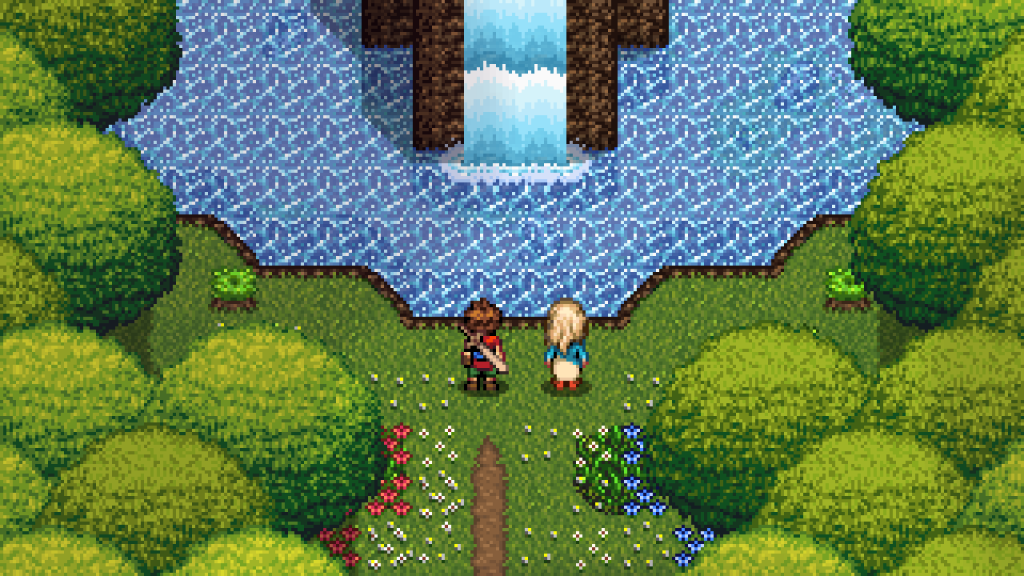
Shrine’s Legacy nails the SNES aesthetic, looking like it could run on original hardware. Environments and characters capture the pixelated charm of the era, though animations feel slightly slicker than most 16-bit titles. Character portraits, while less detailed than modern counterparts like Octopath Traveler, fit the retro vibe perfectly. The game avoids the polished visuals of Sea of Stars, opting for authenticity that’s refreshing and nostalgic.
The soundtrack, with its distorted, synthetic horns, strings, and drums, evokes childhood memories of SNES JRPGs. While it sets the mood effectively, no track stands out like iconic scores from Final Fantasy VI or Chrono Trigger. Still, the music and visuals combine to create a beautiful, authentic experience that transports players back in time.
Narrative & Characters — A Tale of Heroes & Villains

Shrine’s Legacy weaves a familiar yet endearing tale rooted in classic JRPG tropes. The story begins with the ancient legend of Aklor, a dark entity bent on dominating Ardemia. He was thwarted only by the heroic Kailee Shrine and her legendary Sword of Shrine, fueled by eight powerful gemstones. Fast-forward hundreds of years, and players step into the role of Rio Shrine, Kailee’s descendant, living a peaceful life in a remote village where he safeguards the sword and hones his skills in anticipation of Aklor’s potential return. The gemstones, however, have long been scattered across the land, leaving the sword vulnerable.
Inevitably, Aklor awakens, launching a devastating assault on Rio’s village to obliterate the sword and resume his conquest unchallenged. With the aid of Reima, an enigmatic young woman who appears amid the chaos, Rio flees and embarks on a quest to retrieve the gemstones. The narrative unfolds predictably, echoing countless heroes’ journeys from the SNES era, but its charm lies in the execution.
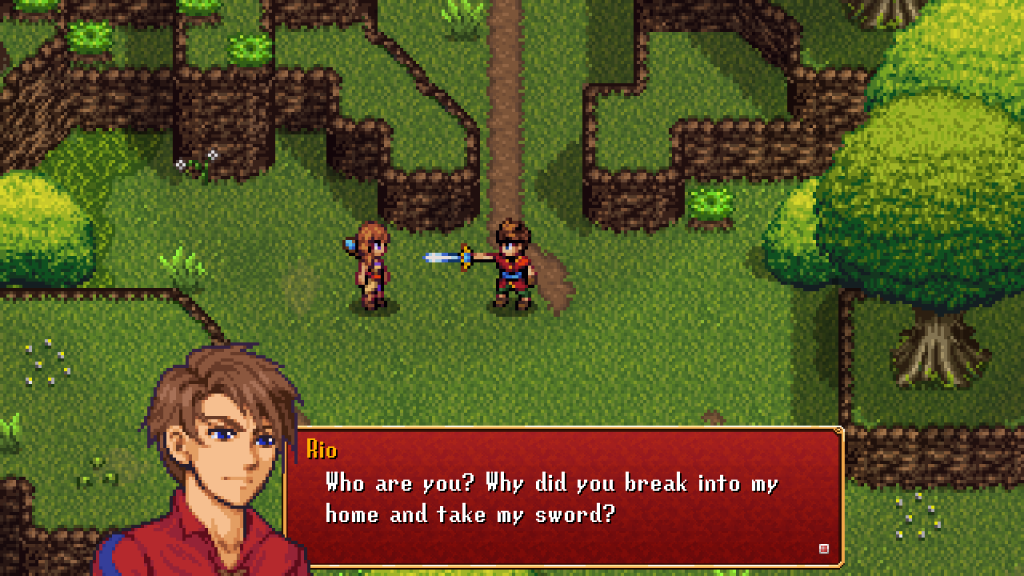
The characters shine brightly against this backdrop. Rio starts as a seemingly overconfident trainee, eager for heroism, yet he hesitates a bit when choosing to go on the journey to defeat Aklor, adding a layer of vulnerability that makes his growth more compelling. Reima, with her sharp wit and mysterious background, clashes with Rio initially, creating banter that’s both humorous and heartfelt as their bond deepens. Even minor villagers contribute flavor, from quirky elders sharing folklore to wide-eyed children idolizing Rio, encouraging thorough exploration and dialogue.
Overall, while the plot treads well-worn paths, the nostalgic simplicity feels intentional, and the vibrant, charismatic cast infuses the story with warmth and engagement, making it a standout element despite its familiarity.
Gameplay — Swordplay and Spellcraft
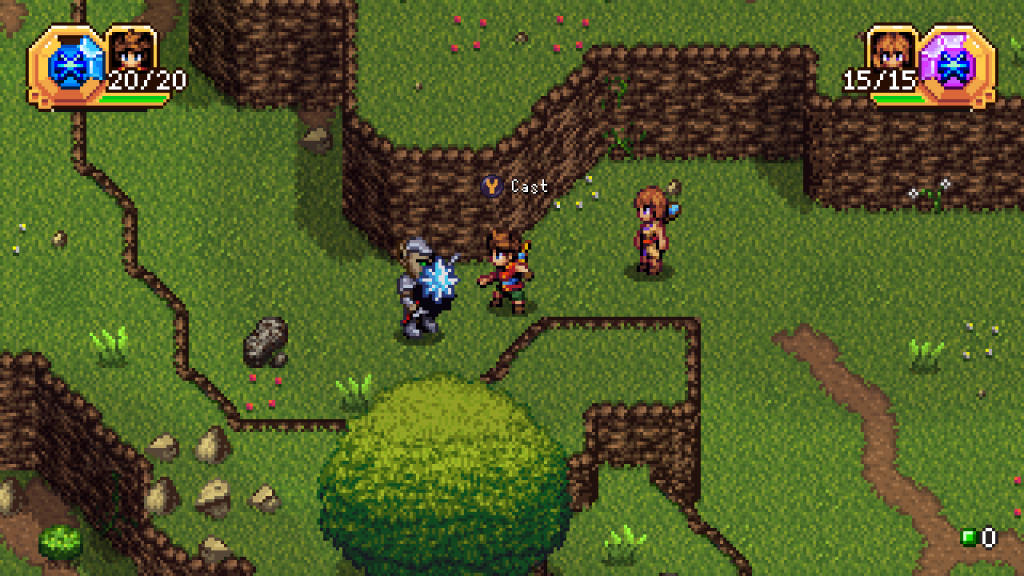
Shrine’s Legacy delivers straightforward action RPG gameplay that harkens back to the simplicity of SNES classics. Players control both Rio and Reima, switching between them seamlessly during exploration and combat. AI will control the character that isn’t in use. While they share access to the same magic abilities unlocked via gemstones, their inherent stat differences encourage strategic swaps—Rio excels in physical prowess, while Reima leans toward magical affinity. The leveling system automatically enhances stats like strength, magic, defense, and resistance upon gaining XP.
Equipment plays a key role, with dedicated slots for weapons and armor that can be purchased from shops or discovered in chests scattered throughout Ardemia. Additionally, jewels act as customizable tools, granting perks like dungeon maps and visible enemy health bars, though you’re limited to four equipped at once initially. Crafting potions, with the help of an eccentric old lady after recovering potion recipes, provides permanent stat buffs, diagonal attacks, and more abilities hidden at this point.
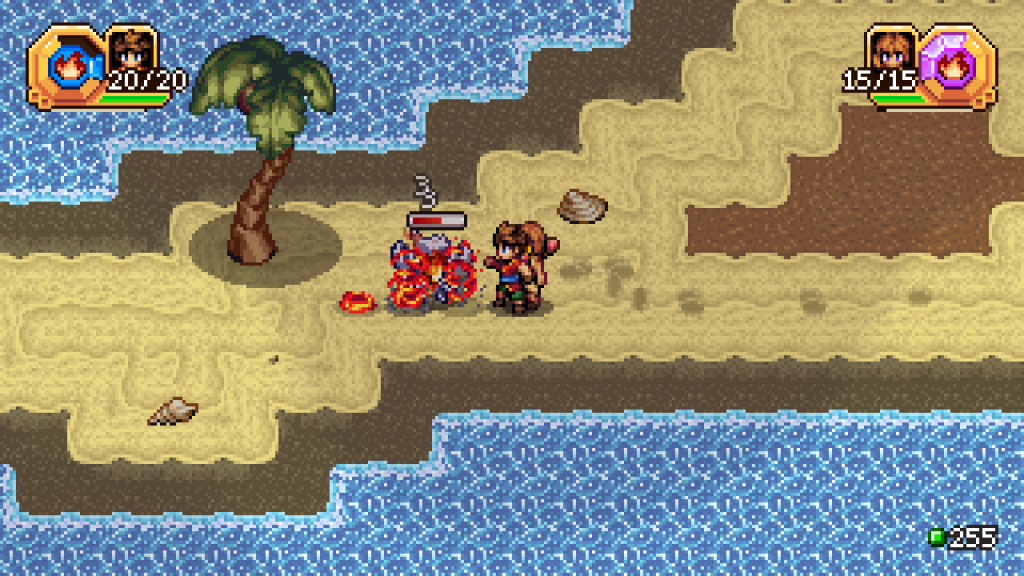
Combat mirrors Secret of Mana’s real-time style, blending melee strikes with spellcasting. Gemstones introduce elemental magic, starting with Ice for freezing foes or creating paths, followed by Fire for explosive damage. These spells interact dynamically with enemies and environments, exploiting weaknesses, solving puzzles, and clearing obstacles. The game remains largely linear, with side paths yielding treasures but rarely straying far from the main route.
Bosses guarding the gemstones add excitement to the mix, proving fun to battle without much difficulty. They feature varied attack patterns that keep players on their toes. While you are not the most difficult, these encounters reward pattern recognition and clever use of spells. If you’re after genre evolution like in Crosscode, this won’t deliver, but it masterfully recreates the joyful, uncomplicated fun of 16-bit JRPGs.
In Conclusion
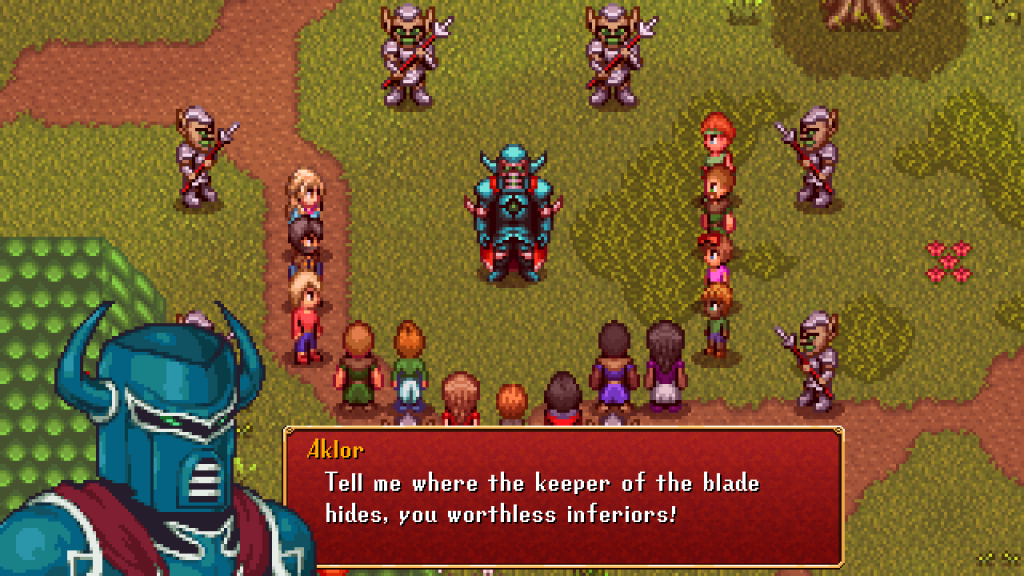
Shrine’s Legacy is a love letter to SNES JRPGs, prioritizing authenticity over innovation. Its retro visuals and soundtrack transport players to the 1990s, while its Secret of Mana-style combat and simple mechanics deliver nostalgic fun. The narrative, though generic, is elevated by charming characters like Rio and Reima, whose dynamic keeps you invested. While it lacks the depth or polish of modern retro-inspired titles like Sea of Stars, its commitment to recreating the 16-bit era’s feel is its strength. For players seeking a cozy, nostalgic JRPG experience, Shrine’s Legacy succeeds, offering a charming, authentic adventure that doesn’t overstay its welcome.
Disclaimer – The publisher provided a key for usage in these Impressions

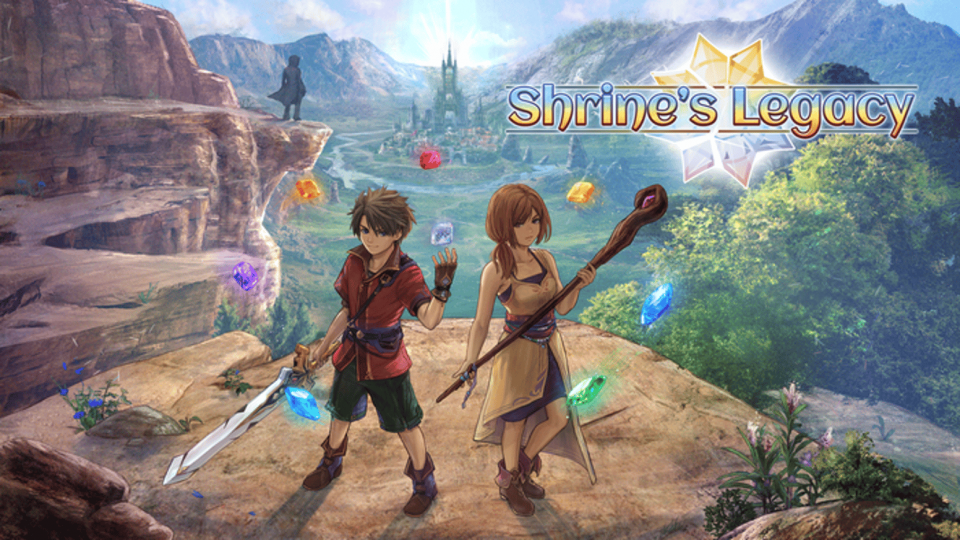
1 comment
[…] story for Shrine’s Legacy is simple, yet satisfying. It is centered on the Demon Lord Aklor, who returns after being […]
Comments are closed.